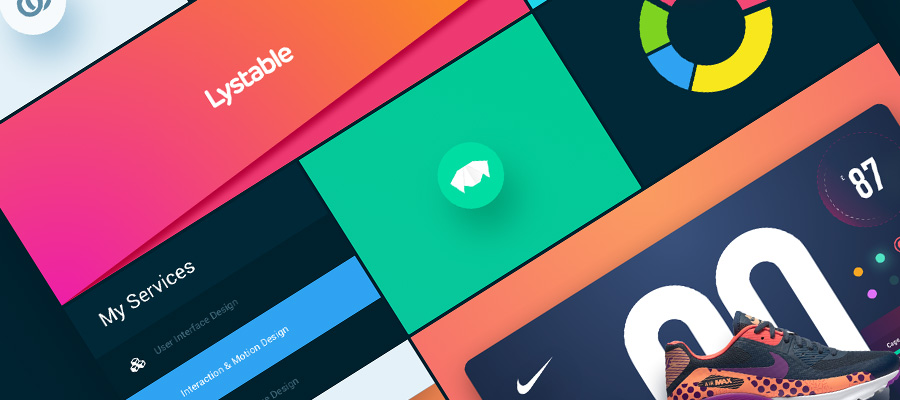In a crowded online market, good products alone will not set you apart. People must find what they need fast and trust your store. A skilled web developer can help your pages load quickly, make sense to search engines, and guide shoppers to the right items. With plain words, clear menus, and no clutter, it’s like swapping a messy attic for a tidy shop. The result: visitors stay longer, buy more, and return again.
The rise of online shopping means having an eCommerce store is no longer a luxury—it’s practically mandatory for businesses competing in a digital-first world. Whether you’re looking to sell artisanal candles or the next big tech gadget, establishing a strong online presence is critical. But here’s the catch: not all online stores are created equal. Some are sleek, swift, and irresistibly user-friendly, while others feel like a tangled ball of digital yarn. The difference? Often, it comes down to whether you enlist the help of a skilled web developer.

illustration made by MC-Product for Master Creationz -Global UI UX Design Studio
Think of a web developer as your store’s digital architect and interior decorator combined—someone who not only understands the structural integrity of your site but also has the aesthetic finesse to make it welcoming. Without professional guidance, you might end up with an online storefront that feels as awkward as a pop-up shop run out of your cousin’s basement. With a qualified developer on your side, however, you can create a virtual shopping experience that rivals the convenience of Amazon, the design flair of Apple’s product pages, and the customer loyalty of your favorite local boutique.
The Perfect Layout: Where Art Meets Science
Choosing the ideal layout for your eCommerce store is more than playing with templates until something looks “good enough.” It’s about strategic decision-making backed by user research, heatmaps, and actual data. Reputable developers often channel their inner Tim Berners-Lee (the inventor of the World Wide Web) to blend technology with human behavior, crafting layouts that guide visitors seamlessly from curiosity to checkout.

Consider this: 85% of shoppers say color influenced their buying decisions, according to Kissmetrics. A good developer can help you harness this psychological power—think vibrant call-to-action buttons, subtle background hues that whisper “trust me,” and product images arranged to highlight their best features. It’s like curating an art gallery, except your exhibits are products and your goal is to encourage visitors to take a piece of your collection home.
Navigation and Home Page Design: Your Site’s Front Door
Ever visited a store where you had to wade through maze-like aisles just to find a single product? Not fun. Your home page and navigation should feel like stepping into a well-organized, charming boutique—no pushy sales clerks, no dusty corners, and no bewildering signposts.

Experienced developers know how to design navigation that even your tech-challenged aunt can handle. Think clean menus, logical categories, and search bars that actually find what you’re looking for. This matters, because 52% of consumers never return to a website they find visually unappealing or hard to navigate. By investing in professional help, you ensure that your site’s “front door” is always open, inviting, and easy to understand—even if you don’t have a neon “Welcome” sign.
Everyday Bugs and Maintenance: The Digital Handyman
Like maintaining a real storefront, running an eCommerce site means occasionally dealing with leaks, squeaky doors, or a broken window display (metaphorically speaking). Bugs happen. Discount coupons fail to display, checkout pages freeze mid-transaction, or product images disappear into the digital ether. Without someone to fix these snafus, you risk leaving your customers grumbling and empty-handed—never a good look.

Hiring a web developer is like having a reliable handyman on call, ready to patch those holes before anyone notices. They keep your content fresh, your site speedy, and your customers happy. And trust us: A happy customer, much like a person who finds a surprise $20 in their jacket pocket, is far more likely to come back for more.
Compatibility and Responsiveness: From Desktops to Pocket Devices
Picture this: Your customer is standing in line at the grocery store, scrolling your website on their smartphone to make a last-minute purchase. If your site looks great on a desktop but turns into an illegible jigsaw puzzle on mobile, you’ve lost the sale. We live in a multi-device world where shoppers expect seamless experiences whether they’re on a 4K monitor or the latest smartphone.

A professional developer ensures your store is responsive, compatible across all major browsers, and so user-friendly that even your neighbor’s tech-averse cat could navigate it with a paw swipe. This attention to detail not only improves user satisfaction but also grabs the attention of search engines, which reward mobile-friendly sites with better rankings.
SEO-Friendly eCommerce Development: Attracting the Digital Crowds
What’s the point of having a beautiful store if no one knows it exists? Enter SEO-friendly development. By incorporating fast load times, semantic HTML tags, descriptive product URLs, and strategically placed keywords, a web developer sets the stage for search engine success. It’s like handing Google a treasure map with a big red “X” where your store stands.
Remember: Quality trumps quantity. No one likes keyword stuffing. Think of SEO like seasoning a dish—just enough to bring out the flavor, but not so much that it overpowers the meal. A skilled developer knows how to strike this balance, ensuring you rank well without looking like you’ve bathed in meta tags.
Growing Pains? Bring On the Expert
As your traffic grows, so do your challenges. Maybe you need advanced product filters, a multilingual interface, or integration with your ERP system to sync inventory in real-time. A talented developer can implement these features seamlessly, saving you from the dreaded “Uh, it broke again” moments.
When you’re busy managing orders, expanding your product lines, or planning your big holiday sale, you want someone in the background fine-tuning the nuts and bolts of your operation. Developers stay current with the latest eCommerce trends, security updates, and technologies, ensuring your store evolves gracefully—like a caterpillar morphing into a stunning butterfly, rather than a moth hopelessly circling a porch light.
Frequently Asked Questions (FAQs)
Below are the most common questions we’ve encountered. We’ve answered them like a savvy friend who has been around the digital block a few times, mixing practical insights, tips, and a little humor. Consider this your mini masterclass in making the most of your online presence.
- How does SEO-friendly eCommerce website development enhance online visibility and sales?
It’s like putting a lighthouse on your digital coastline. With clean code, quick load speeds, mobile optimization, and strategic keywords, you guide the search engines (and customers) straight to your shore. More visibility equals more chances to turn curious wanderers into paying shoppers. - Is search engine optimization included in the eCommerce website development process?
Many developers lay the groundwork for SEO—think solid site architecture and responsive design. For advanced SEO techniques, you might hire dedicated experts. But starting off with good fundamentals gives you a head start. - Are SEO and conversion optimization services included in eCommerce website development?
Some developers bundle these services, others keep them separate. Basic on-site SEO is common, while conversion optimization may require specialized input. The good news? A great developer can recommend the right path forward. - Why is website speed important for eCommerce, and how does it affect sales?
Patience is rare online. Slow sites send customers packing. Fast sites feel like well-oiled machines, encouraging people to stick around, browse, and ultimately buy. Speed is both a user experience factor and a ranking signal—win-win. - Why is having an eCommerce website crucial in 2024?
Online shopping isn’t going anywhere. If anything, it’s weaving deeper into daily life. An eCommerce website ensures you’re ready to meet modern shoppers where they are—on their devices—offering convenience, personalization, and a 24/7 storefront. - How can custom eCommerce functionality be developed to meet unique business needs?
Developers can craft tailored features as unique as your favorite handcrafted latte. From niche product configurators to custom checkout flows, custom coding transforms your store into a perfect fit for your brand and customers. - What are the steps involved in the eCommerce web design process?
Typically: research, wireframing, design mock-ups, coding, testing, launch, and ongoing optimization. It’s a bit like opening a restaurant—plan the menu, set the tables, taste-test the dishes, and then open the doors to hungry guests. - What kind of eCommerce features and functionality can be expected from the service provider?
Look forward to secure checkouts, product management tools, SEO-friendly pages, mobile responsiveness, and integrations with marketing tools. Think of it as getting a Swiss Army knife—versatile, reliable, and ready for just about anything. - Does the service provider offer enterprise-level custom eCommerce website design?
Many do. Enterprise solutions handle huge inventories, integrate with legacy systems, and accommodate complex workflows. It’s like upgrading from a standard sedan to a luxury SUV capable of off-roading through the digital jungle. - How can email marketing be integrated into an eCommerce website for better conversion rates?
Embedded sign-up forms, automated follow-ups, abandoned cart reminders—these strategies turn email marketing into a digital megaphone, gently nudging customers toward a purchase they might have otherwise forgotten. - Why is integrating ERP systems and data feeds important for eCommerce success?
Streamlined inventory management, automatic product updates, and synchronized order processing—ERP integration is like hiring a brilliant assistant who never sleeps, ensuring your store always runs smoothly. - How can custom eCommerce website solutions benefit large corporations?
Big businesses need robust, scalable systems. Custom solutions offer enterprise-grade security, tailored user experiences, and seamless integration with internal tools, allowing corporations to move mountains with minimal friction. - What marketing strategies can be used to promote products and websites?
From SEO and social media ads to influencer partnerships and creative content marketing, the sky’s the limit. A developer ensures your site can handle these strategies, providing fast page loads, easy updates, and a structure that search engines love. - What security measures are implemented for eCommerce websites?
SSL certificates, secure payment gateways, PCI compliance, regular patches—your developer acts like a digital bodyguard. No shady characters allowed inside this well-lit, well-guarded digital store. - Can an eCommerce website be integrated with existing ERP or CRM tools?
Absolutely. It’s like hooking your website’s brain into your business’s nervous system, ensuring all data flows seamlessly, orders are tracked, and your team avoids manual grunt work. - What are the benefits of integrating an eCommerce website with ERP, Amazon, eBay, or other marketplaces?
It centralizes management, broadens your reach, and allows you to juggle multiple sales channels without dropping the ball. It’s a time-saver, stress-reducer, and revenue-booster rolled into one. - What options are available for checkout and credit card processing on an eCommerce site?
From PayPal to Stripe to specialized merchant accounts, there’s a payment solution for every business. A developer ensures each integration is smooth and secure, so your checkout feels more like a friendly handshake than a bureaucratic hurdle. - What services are offered to ensure online businesses succeed, from start-ups to large companies?
Developers provide a spectrum: from basic template setups for newcomers to fully customized solutions for industry giants. Add in ongoing maintenance, SEO advice, and marketing integrations, and you have a full toolbox for growth. - What is the difference between using templates and custom website design?
Templates are like store-bought costumes—quick and easy. Custom designs are tailored suits, perfectly fitted and built to impress. While templates save time, custom designs often yield better long-term returns. - Are there basic eCommerce solutions or packages available for small businesses?
Yes, think of them as starter kits: essential features, basic SEO, and mobile-friendly layouts. Perfect for dipping your toes in the eCommerce ocean before diving into full-blown custom solutions. - Which eCommerce platforms does the service provider work with?
WooCommerce, Shopify, Magento, BigCommerce—your developer can help you pick a platform that matches your budget, product range, and technical comfort. It’s like choosing a home base for your online empire. - What are some resources or featured articles available for eCommerce web design insights?
Industry blogs, design forums, and case studies from trusted experts can spark fresh ideas, keep you informed, and point out pitfalls to avoid. - How is the cost of an eCommerce website determined?
Complexity, features, platform choice, and ongoing support all influence price. Discussing your goals and must-haves with a developer leads to a tailored proposal—no hidden fees, just clear expectations. - What is the importance of product and data imports for eCommerce websites?
They keep your store accurate, up-to-date, and headache-free. Rather than manually updating each item, automated imports ensure pricing, stock, and descriptions stay fresh, leaving you more time to focus on strategy. - What are some examples of successful eCommerce projects and their outcomes?
Check portfolios and testimonials. Success often shows up as increased conversions, higher average order values, improved SEO rankings, and glowing customer feedback. Proof that smart development pays off. - How can potential clients get an estimate or proposal for eCommerce website design?
Contact the service provider, outline your requirements, and request a quote. Many offer free consultations—just be prepared to share your vision so they can craft a tailored, no-surprises proposal. - What shipping rate options are available for eCommerce platforms?
Flat rates, free shipping thresholds, real-time carrier calculations, or local pickup—there’s a shipping solution for every scenario. Developers integrate these options so customers won’t flinch at the final step. - What are the frequently asked questions about eCommerce web design services?
Platform choices, payment gateways, customization depth, security measures, marketing tools—it’s all fair game. A thorough FAQ (like this one) preempts confusion and helps you feel confident in your decision. - How long has the company been an eCommerce agency and how many websites have they launched?
Experience matters. Some agencies boast decades in the trenches, launching hundreds of sites. Peek at their portfolio and reviews to gauge their reliability and expertise—it’s the digital equivalent of reading restaurant reviews before dining. - What advantages does WooCommerce offer as a WordPress plug-in for eCommerce?
WooCommerce blends seamlessly with WordPress, offering flexibility, an expansive ecosystem of plugins, and solid SEO features. It’s like hosting a party in your own home rather than renting an unfamiliar venue. - Why is Shopify considered a popular and reliable eCommerce platform?
Shopify is user-friendly, secure, and packed with templates and apps. It’s the dependable best friend who always shows up on time, ready to help you sell more products without fuss or drama.

Conclusion: The Future Is Bright (and Profitable)
In an age where the online marketplace is as busy as a New York City sidewalk, standing out requires more than decent products. It demands a well-structured, visually appealing, and seamlessly functioning eCommerce store. By partnering with a skilled web developer, you tap into a wealth of knowledge that refines your layout, improves navigation, maintains compatibility, boosts SEO, and offers continuous support as your business grows.
In other words, you’re not just building a website—you’re crafting an experience. The end result is an eCommerce store that rivals retail giants, charms search engines, and keeps customers returning for more. As digital commerce continues to evolve, ensuring your store adapts gracefully is the difference between blending in and stepping into the spotlight. With a professional web developer on your team, you’re well on your way to delivering an online shopping experience that feels less like a chore and more like discovering the perfect gem in a treasure chest.




















